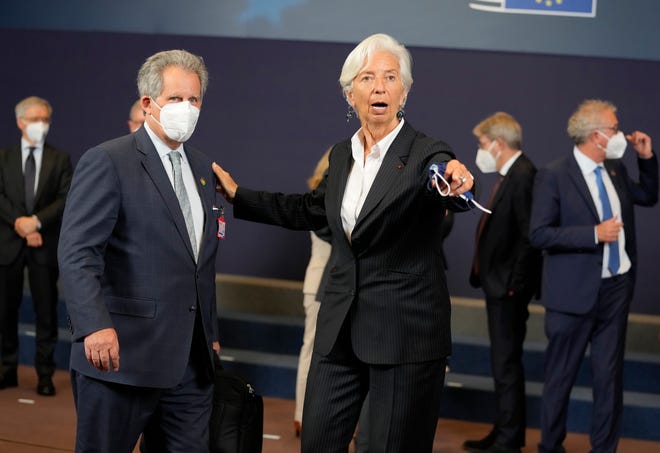Unfortunately, America’s economic recovery is not indicative of the world economy. Federal Reserve officials will discuss measures to scale back our easy money policies because the U.S economy is doing so well and concerns remain about budding inflation. In stark contrast, European Central Bank (ECB) President Christine Lagarde hinted that for an even longer period the bank will provide monetary support primarily because of the risk the pandemic could pose to the euro zone’s economic recovery.
Low- and middle-income countries are faring badly. One would expect a benefit from surging global demand for commodities and factory products. Instead, they are struggling. Indonesia, battling another round of Covid-19, is redeploying oxygen from industry to hospitals. In 2021 the poorest countries, which are desperately short of vaccines, are forecast to grow more slowly than rich countries for only the third time in 25 years.
Jonas Golter, senior market economist at Capital Economics said, “Divergence between the U.S. and other major economies will remain a key feature of the post-Covid recovery. Growth prospects and, especially inflation pressures appear stronger in the U.S.”
Federal Reserve Chairman Jerome Powell has been surprised by our inflation. Powell promised that he would employ all necessary tools to prevent a recurrence of the high inflation rates America experienced in the late 1970’s and early 1980’s.
By contrast, Christine Lagarde reiterated that in her view Europe’s inflation risk is now minimal. Her concern is unemployment. In Britain, France, and Switzerland, 8-13% of employees remain on furlough.
The U.S. dollar provides a meaningful yardstick by which to analyze the relative strength of our economy. High government spending has turbo-charged our economy. The U.S. dollar does well under two different scenarios – when the U.S. economy is doing much better than the rest of the world or when the world is struggling and U.S. assets, such as Treasuries, become a haven. Conversely, the dollar weakens when many countries are growing together.
What is preventing the rest of the world from fully recovering from Covid-19?
- Only those countries getting vaccinations can tame the pandemic. Only one in four people around the globe have currently received their first dose of the vaccine. Until a significantly higher percentage of people are vaccinated, the world cannot attain prepandemic levels– stores, restaurants, and offices cannot fully reopen.
- The shortage of microchips has stymied the production of electronics, cars, and other products.
- The cost of shipping goods from China to the United States has quadrupled from its prepandemic levels.
- Only wealthy countries can afford $ trillion-dollar stimulus programs.
When I began writing for the Herald Tribune in 2008, during the Great Recession, central bankers cooperated globally to prevent a total collapse. Those strategies are inappropriate for today’s challenges.
The world’s economic outlook differs markedly because the availability of the Covid vaccine varies dramatically between developed countries and the emerging countries. As a result, countries must embrace policies that address their individual financial circumstances.
I applaud President Biden’s commitment to the United States being the “arsenal of vaccines for the world.” His vaccine strategy is a vital component of our overall global strategy to lead the world in the fight to defeat Covid-19. For America to assure continued robust growth, we need to take the same supportive measures that we embraced during World War II (Lend Lease) and the Cold War (Marshall Plan). Like the dangers we faced in 1940, the Atlantic and Pacific Oceans cannot save us from global perils.
“A stitch in time saves nine.” History repeatedly proves that spending a little time and effort to deal with a problem is far better than letting the Covid pandemic kill millions of people and destroy the global economies.
Originally published in the Sarasota Herald-Tribune




